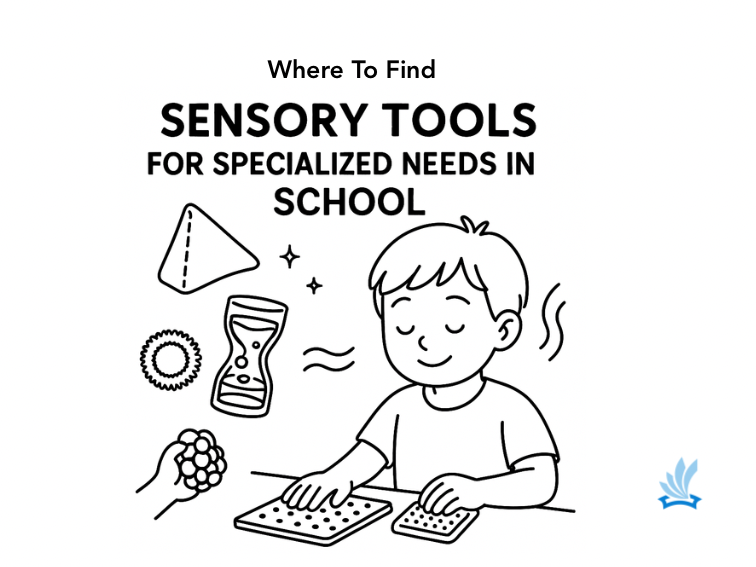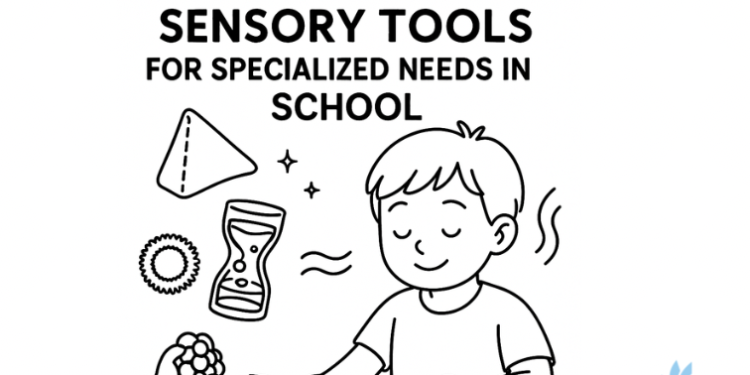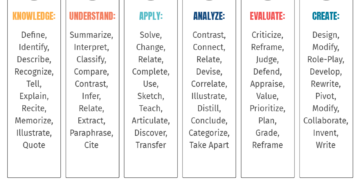In a world full of stimuli, sensory rooms are becoming an essential tool for schools looking to better support students with sensory sensitivities, autism, ADHD and anxiety.
These thoughtfully designed spaces offer a calming refuge, helping students regulate their emotions, focus better in class and engage with learning on their terms.
For educators and school decision-makers, outfitting a sensory room isn’t as simple as tossing beanbags in a quiet corner. From tactile walls and fidget tools to bubble tubes, swings and calming lighting, every element must be purposeful and inclusive. Here’s where to find high-quality tools and technologies and how to incorporate them.

The Best Providers of Essential Sensory Room Components
Sensory rooms give students a space to get relief from sensory overstimulation with high-quality components to cater to various sensory needs. From tactile stimulation to visual serenity, selecting the right equipment can help foster an inclusive environment where students feel safe and supported.
Here is a list of the top vendors that offer specialized sensory room tools, including furniture, lighting and interactive products designed for educational purposes.
- Enabling Devices
Enabling Devices is a leader in adaptive tools. It offers a wide range of sensory room products that can be customized to meet individual needs. Whether you’re designing a small calming corner or a full sensory room, it has everything from switch-adapted toys to immersive lighting solutions. Enabling Devices offers inclusive design and educator resources, ensuring their products are functional and educational.
Key features:
- Customizable sensory kits for schools
- Switch-adapted toys and tools that promote interaction
- High-quality tactile and auditory products
- Safe and durable designs ideal for classroom environments
- ADA-compliant solutions to cater to students with various needs
See also Best Assistive Technology Apps
- National Autism Resources
National Autism Resources is a well-known provider of sensory products that caters to schools and therapy centers. Its wide selection includes calming corner setups, sensory integration tools and sensory-friendly furniture designed to reduce stress and overstimulation. Its tools are cater to budget-conscious schools looking to positively impact sensory processing.
Key features:
- Affordable and customizable sensory kits for schools
- Products designed to help students with autism, ADHD and other sensory needs
- Tactile and auditory tools that promote calming and self-regulation
- Resources for creating effective sensory spaces
3. Southpaw Enterprises
Southpaw Enterprises specializes in creating sensory tools for physical therapy and sensory integration. Its swings, therapy mats and weighted products are a favorite among therapists working in schools and clinics. Southpaw Enterprises’ products are highly recommended because of their therapist-approved designs, which support physical and emotional development.
Key features:
- Therapy-based products like swings, mats and weighted blankets
- Products designed to improve physical coordination and sensory regulation
- Durable and therapist-approved tools
- Suitable products for both classroom and therapy room environments
See also Examples Of Assistive Technology In The Classroom
4. Fun and Function
Fun and Function offers a variety of portable sensory tools, including mobile sensory carts and compact kits that can fit into any classroom. It aims to make sensory tools accessible for all, providing a wide range of products that promote engagement, focus and relaxation. Perfect for schools that need portable solutions, Fun and Function’s products are great for creating a multisensory learning environment.
Key features:
- Lightweight, portable sensory carts
- Multi-use tools for sensory engagement
- Customizable solutions for students with various sensory needs
- Products designed to promote physical and emotional regulation
5. TFH Special Needs Toys
TFH Special Needs Toys is a well-established name in the sensory product market, offering bubble tubes, fiber optic strands and interactive wall panels that create a calming atmosphere. Its sensory products are particularly popular for students with autism and sensory processing challenges. TFH Special Needs Toys is a great option for schools seeking visually immersive tools to transform any space into a sensory-rich experience.
Key features:
- Immersive lighting and visual stimulation tools like bubble tubes
- Interactive sensory panels for tactile engagement
- Products that promote both relaxation and sensory exploration
- Suitable products for school and home use
6. School Specialty
School Specialty offers a comprehensive range of sensory products that integrate seamlessly into classroom settings. From specialized seating to sensory integration therapy kits, its tools are designed to support students across a wide range of sensory needs. School Specialty is ideal for schools looking for a one-stop shop to outfit a sensory room and create a holistic learning environment.
Key features:
- Full-room outfitting options, including furniture and sensory accessories
- Integration with Individualized Education Programs (IEPs) to support specific educational needs
- Products designed to promote physical and emotional regulation
- Cost-effective solutions for schools of all sizes
7. eSpecial Needs
eSpecial Needs is known for offering large-scale room setups. The company provides everything from multi-user sensory rooms to individual sensory equipment, ensuring schools build the perfect environment for students who need a more focused learning space. Its turnkey solutions are ideal for schools that want to build sensory spaces with minimal hassle.
Key features:
- Comprehensive sensory room design services
- Available large-scale setups
- A variety of products designed to help students with different sensory needs
- Customer service focused on making sensory room creation easier
8. Rompa
Rompa is a pioneer in sensory room equipment, known for its innovative Snoezelen rooms and calming products. They offer a range of therapeutic sensory items designed to soothe and engage students with sensory processing disorders. Rompa’s extensive experience and international reach make it a top choice for schools creating sensory rooms all around the world.
Key features:
- Expertise in sensory room design for various age groups
- Snoezelen rooms and products for relaxation and stimulation
- A focus on sensory innovation
- International shipping to schools worldwide
9. Abilitations
Abilitations offers a variety of classroom sensory tools, including movement-based equipment like balance balls, swings and tactile items. Its products are designed to enhance physical and sensory skills, which is ideal for children who benefit from sensory breaks throughout the school day. Abilitations is the perfect vendor for schools looking for practical, budget-friendly solutions that don’t compromise quality.
Key features:
- A wide selection of sensory equipment for tactile, vestibular and proprioceptive input
- Cost-effective sensory tools that support diverse needs
- Durable and easy-to-use products suitable for classrooms
- Therapy-based tools for physical engagement
10. FlagHouse
FlagHouse provides a range of physical education and sensory integration tools that cater to various needs. Its PE and sensory tools work well in therapy and classroom settings, helping students focus, engage and regulate sensory input. FlagHouse products are designed to integrate sensory support into the larger educational environment, making them a versatile option for schools with diverse needs.
Key features:
- Sensory tools that integrate with PE programs
- Products designed for physical therapy and sensory development
- Easy-to-use tools suitable for both large and small spaces
- Ideal for inclusive classrooms and therapy centers
Frequently Asked Questions About Sensory Rooms
- Where Can I Find the Essential Components to Include in a Sensory Room?
Enabling Devices offers a wide range of essential sensory room components. Several other companies — such as National Autism Resources, Southpaw Enterprises, and Fun and Function — also cater to educators looking to add to or build a sensory room in their schools.
- What Are the Sensory Needs of My Students?
Before purchasing any equipment, it’s important to understand the specific sensory needs of the students using the room. You must determine whether they seek calming, soothing experiences or more stimulating activities.
You will also need to decide if the room will serve students with sensory processing disorders, autism, ADHD or anxiety and if your students have any sensory preferences or sensitivities to be aware of.
- How Much Space Do I Have for Equipment?
The size of your sensory room will determine how much equipment you can fit and how it should be arranged. Measure the square footage of your room and then decide how many people will use it at any given time. Once you have done this, try to find out if you have enough space for mobility equipment or larger interactive sensory panels.
- What Is My Budget?
Sensory room equipment can vary in price depending on the type and complexity of the products. You need to determine your total budget for outfitting the room, find out if you have any funding opportunities available and whether or not you’re open to purchasing high-end products.
- How Will I Ensure the Equipment is Safe and Durable?
Safety and durability are crucial in a school environment. Ask about the materials and design of the equipment you’re considering. Find out if it’s made from non-toxic, durable materials, if it has safety features and if it can handle daily use in a busy educational setting.
- Will the Equipment Support All the Senses?
A well-rounded sensory room should engage multiple senses. Find out if the equipment provides multisensory experiences like visual stimulation or tactile interactions. You can also find out if there are auditory experiences like sound machines or speakers for music.
- How Easy Is It to Use and Adjust the Equipment?
The sensory room should be easy for students to navigate and interact with independently or with minimal support. You need to know if the equipment is user-friendly, if it can be adjusted and customized, and if the controls are simple enough for staff and students to operate.
- How Will I Maintain the Equipment Over Time?
To ensure the longevity of your sensory room components, it’s important to think about maintenance and care. You should find out how easy the equipment is to clean, whether or not the materials are resistant to wear and tear, and what kind of ongoing support or warranties the manufacturer offers.
- Will the Equipment Promote Engagement and Interaction?
Sensory room equipment should encourage engagement, whether for relaxation or sensory exploration. Find out if the equipment will enable students to participate actively, if the products promote physical movement, and whether the equipment can be integrated with activities like therapy sessions, relaxation exercises or mindfulness practices.
10. Does the Equipment Provide a Calming or Stimulating Experience?
It’s important to understand whether your sensory room will focus on calming or stimulating sensory experiences — or a balance of both. Determine whether you need equipment that helps students self-regulate and calm down or stimulating tools to engage students who need heightened sensory input.
11. How Can I Ensure the Equipment is Accessible for All Students?
Ensuring your sensory room is inclusive is vital for serving all students effectively. Find out if the equipment is adaptable to different sensory and physical capabilities and if students with limited mobility can access the room. It’s also a good idea to find out whether or not there are options for students with visual or hearing impairments.
Building a Sensory Room That Works
Creating a sensory room is more than choosing colorful lights and soft seating. To make the space supportive and inclusive, you’ll need a clear strategy, evidence-based thinking and a deep understanding of your students’ needs. Here’s how to build a sensory room that works:
Start With a Clear Purpose
Before you shop for any equipment, define what the room is for. Is it a calming space for students with emotional regulation needs? A place for movement breaks and proprioceptive input? Maybe a hybrid model that includes zones for both?
Use student IEPs, behavior intervention plans or occupational therapy reports to identify common sensory challenges among your learners. This helps prioritize which tools and stations are essential from the start.
Design With Zones in Mind
A well-designed sensory room often includes distinct zones for different sensory goals. Think of it like a flow, from calming to alerting to grounding. You could have a calming zone, a movement zone, a tactile zone and a visual focus zone. Use soft dividers, rugs or furniture placement to subtly define each area without restricting space.
Choose Tools That Support Regulation, Not Just Stimulation
It’s easy to be dazzled by flashy tech and novelty gadgets. However, sensory rooms are not about overstimulation. They’re about helping students find regulation. A great sensory tool does more than entertain — it calms the nervous system, builds self-awareness and offers a safe physical outlet.
Chaos to Calm
By asking key questions, using trusted suppliers and carefully planning your sensory room, you will create a powerful tool for promoting emotional well-being, sensory regulation and learning. With the right equipment, you can make an inclusive, supportive space to foster student growth and comfort.
TeachThought’s mission is to promote critical thinking and innovation education.




















